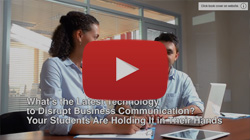
Airbnb's communication strategies offer insights for businesses to improve messaging and customer relationships.
Master Airbnb's Communication Strategies to Boost Business Success
In today's fast-paced, competitive marketplace, effective communication is the key to standing out and achieving success. Airbnb, a pioneer in the hospitality industry, has built a global community of travelers and hosts through its masterful communication strategies. This article delves into Airbnb's approach and provides actionable insights for businesses across all sectors seeking to enhance their messaging and customer relationships.
1. Humanizing the Brand: The Power of Authentic Storytelling
Airbnb's communication strategy is rooted in authentic storytelling. By sharing personal experiences from both hosts and guests, the platform creates a deep emotional connection with its audience. These real-life narratives go beyond generic marketing messages, showcasing the human element and fostering trust.
Key Takeaway: Replace impersonal marketing with authentic stories. Share customer success stories, employee testimonials, and behind-the-scenes glimpses into your company's journey to create a genuine connection with your audience.
2. Building a Thriving Community: Fostering Engagement
Airbnb understands the power of community. They actively engage with users through social media, respond promptly to feedback, and create a sense of belonging within their user base. This proactive approach transforms customers into brand advocates and fosters long-term loyalty.
Key Takeaway: Open communication channels are essential. Be responsive to comments, actively seek feedback through surveys and polls, and develop interactive content like contests and online communities to build a vibrant and engaged user base.
3. Consistent Messaging: Reinforcing Brand Identity
Consistency is key to building a strong brand. Airbnb maintains a cohesive voice and message across all communication platforms – website, app, social media, and even customer service interactions. This uniformity strengthens brand identity and instills trust in users.
Key Takeaway: Ensure your brand's voice, tone, and values are reflected consistently across all communication channels. This consistency creates a recognizable brand experience and fosters trust among your audience.
4. Visual Storytelling: Captivating the Imagination
Airbnb leverages high-quality visuals to effectively communicate its brand. Stunning images of unique properties and local experiences captivate potential customers and bring the Airbnb experience to life, inspiring travel and fostering a sense of wonder.
Key Takeaway: Invest in high-quality visuals that showcase your products, services, and brand story. Compelling imagery can significantly enhance your communication efforts and leave a lasting impression on your audience.
5. Building Trust: Embracing Transparency
Transparency is fundamental to Airbnb's business model. By providing detailed property descriptions, honest reviews, and clear pricing, the platform establishes trust with its users. This open communication builds credibility and reduces uncertainty, fostering a sense of security for both hosts and guests.
Key Takeaway: Prioritize transparency in all aspects of your communication. Be upfront about pricing, product details, company policies, and potential drawbacks. Clear and honest communication sets realistic expectations and builds trust over time.
6. Personalized Experiences: Valuing Individuality
Airbnb's personalized approach sets it apart from its competitors. Utilizing user data, the platform tailors recommendations and communication to individual preferences, making customers feel valued and understood. This personalized touch enhances customer satisfaction and fosters loyalty.
Key Takeaway: Utilize customer data ethically and effectively to personalize communications. Offer tailored recommendations, targeted content, and relevant offers based on individual needs and preferences.

Airbnb evolves communication with tech, embracing AI and platforms to engage audiences effectively.
7. Adapting to the Evolving Landscape: Staying Ahead of the Curve
Airbnb thrives on adaptation. The company constantly evolves its communication strategy, incorporating new technologies and platforms to reach its audience. From optimizing for mobile to leveraging AI-powered chatbots, Airbnb ensures it meets customers where they are.
Key Takeaway: Stay informed about emerging communication technologies and platforms. Be prepared to adapt your strategy and embrace new tools to reach your audience effectively across various channels.
8. Amplifying Authenticity: Leveraging User-Generated Content
Airbnb effectively integrates user-generated content into its communication strategy. By showcasing real reviews, photos, and experiences shared by users, the platform adds authenticity and builds trust. This approach fosters a sense of community and encourages user engagement.
Key Takeaway: Encourage and highlight user-generated content in your communication efforts. This not only provides social proof but also engages your community and creates a sense of ownership among users.
Elevating Your Business Communication for Lasting Success
Airbnb's success demonstrates the transformative power of effective business communication. By embracing authentic storytelling, fostering community engagement, maintaining consistent messaging, leveraging visual appeal, prioritizing transparency, personalizing interactions, adapting to changing channels, and utilizing user-generated content, businesses can create a powerful communication strategy that fosters strong customer relationships and drives long-term growth.
Actionable Tips for Your Business
Develop a content calendar to ensure consistent storytelling across channels
Implement a feedback system to encourage customer engagement and improve services
Conduct regular brand audits to ensure consistent messaging and visual identity
Utilize data analytics to personalize customer interactions and improve communication effectiveness
Stay up-to-date with the latest communication technologies and trends to stay ahead of the curve
By adopting and adapting these proven tactics, businesses can elevate their communication efforts, create lasting relationships with their audience, and achieve remarkable success.
Certainly. Here's a similar approach using Airbnb as the case study, targeted at college instructors of business communication:
Airbnb's Lessons for the Classroom: How Excellence in Business Communication Bridges Theory and Practice
As instructors, we're constantly seeking real-world examples to illustrate key principles in our field. Airbnb's remarkable success offers a compelling case study that aligns exceptionally well with core concepts in business communication. Here's how you can incorporate Airbnb's strategies into your curriculum:
1. Authentic Storytelling and Brand Humanization
Lesson Plan Idea: Have students analyze Airbnb's marketing campaigns and social media content. Compare early messaging to current strategies, discussing how they exemplify authentic storytelling and brand humanization.
Key Concept: Airbnb's growth from a startup to a global brand (valued at $47 billion in 2023) demonstrates the tangible results of effective storytelling and communication strategies.
2. Community Building and User Engagement
Class Activity: Examine Airbnb's social media interactions and community forums. Discuss how their communication style embodies principles of active listening, responsiveness, and community fostering.
Discussion Topic: How can Airbnb's community-building strategies be applied to other industries or traditional businesses?
3. Consistent Brand Messaging
Case Study: Analyze Airbnb's communication across various platforms (website, app, social media, customer service). Identify how they maintain a consistent voice and message.
Student Exercise: Develop a cross-platform communication plan for a fictional company, applying Airbnb's principles of consistency.
4. Visual Communication
Analysis Project: Have students evaluate Airbnb's use of visuals in their marketing and platform. How do these images contribute to the brand story and user experience?
Critical Thinking: Discuss the role of visual storytelling in modern digital communication.
5. Trust-Building Through Transparency
Research Assignment: Ask students to examine Airbnb's approach to reviews, pricing, and conflict resolution.
How does this transparency contribute to trust-building?
Group Project: Develop a transparency-focused communication strategy for a hypothetical service-based business, inspired by Airbnb's approach.
6. Personalization in Communication
Seminar Discussion: Explore how Airbnb uses data to personalize user experiences and communication. How might other industries adapt these personalization strategies?
Guest Speaker Idea: Invite a local tech entrepreneur to discuss how they've implemented personalized communication in their business.
7. Adapting to New Communication Channels
Case Study: Examine Airbnb's evolution from website-based to mobile-first communication. Analyze their integration of AI chatbots and other emerging technologies.
Student Project: Propose a communication strategy for Airbnb (or a similar company) to effectively leverage a new or emerging communication platform.
8. Leveraging User-Generated Content
Lesson Plan Idea: Analyze Airbnb's integration of user reviews, photos, and experiences into their marketing and platform. Discuss the benefits and potential challenges of this approach.
Group Activity: Develop a campaign that encourages and utilizes user-generated content for a fictional brand.
Use Airbnb to Teach Strategic Communication.
By integrating Airbnb's real-world examples into your course, you can bring textbook concepts to life, making them more relatable and memorable for students. This approach not only enhances understanding but also demonstrates the universal applicability of effective business communication principles across various industries.
Remember, the goal is to inspire students to view communication as a strategic tool for business success. Airbnb's journey from a small startup to a global hospitality giant provides a powerful narrative to achieve this objective.
We encourage you to adapt these ideas to fit your specific course needs and welcome any innovative approaches you develop using this case study.
 Excellence in Business Communication: A Textbook Designed for Your Students’ Success
Excellence in Business Communication: A Textbook Designed for Your Students’ Success
The article "Mastering Business Communication: Lessons from Airbnb's Success" highlights the importance of effective communication in building a thriving business. Excellence in Business Communication perfectly aligns with this message by providing students with the skills and knowledge needed to excel in today's fast-paced business environment.
This textbook emphasizes the following key principles that are also reflected in Airbnb's communication strategy:
Clear and concise writing: Excellence in Business Communication teaches students how to craft clear, concise, and engaging messages that resonate with their audience, just like Airbnb's effective use of storytelling.
Effective verbal and nonverbal communication: The textbook covers the importance of verbal and nonverbal cues in communication, mirroring Airbnb's focus on creating a sense of community and belonging through its communication channels.
Audience analysis and adaptation: Excellence in Business Communication stresses the need to understand and adapt to different audiences, a principle that Airbnb exemplifies through its personalized approach to customer communication.
Technology-enabled communication: The textbook explores the role of technology in business communication, reflecting Airbnb's use of emerging technologies to stay ahead of the curve.
By using Excellence in Business Communication as a learning resource, students can develop the skills and knowledge needed to create effective communication strategies that drive business success. As Airbnb's story demonstrates, mastering business communication is essential for building strong relationships, driving loyalty, and achieving long-term growth.
Read more




















